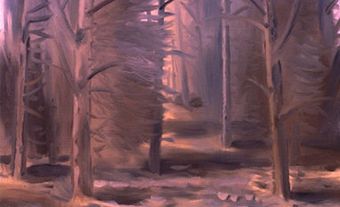Coffee houses
Coffee houses. Cafés that presented folk, blues and, occasionally, pop and jazz musicians. Like the boîte à chansons that was unique to French Canada, the coffee house - often in a converted house, a storefront or a church basement - was characterized by its limited seating capacity (an average of less than 100), informality, and intimacy. As its name suggests, it was not licensed to sell liquor. The Riverboat, which flourished 1964-78 in Toronto, was Canada's best-known coffee house. The Yellow Door, established in 1967 in Montreal and continuing in 2008, is the longest-lived and a rare survivor of the coffee house's general demise in the late 1970s.
The coffee house had a long history in North America as a place for social and literary activity. Its use as a music venue, however, began in the late 1950s. Many coffee houses were located in neighbourhoods populated by young people - on or near university campuses (eg, the Yellow Door in a building owned by the Student Christian Movement at McGill University, Montreal; the Cuckoo's Nest on the campus of the University of Western Ontario, London; and The Wasteland, University of Ottawa) or in the "bohemian" or "hippie" communities of the 1960s (eg, Yorkville in Toronto and Gastown in Vancouver).
Toronto's Gerrard Street Coffee House and Club 71 (the latter in Yorkville), both of which opened in the late 1950s, were among the first in Canada to feature music. Others open for longer or shorter periods of business during the next 20 years included the Bohemian Embassy, the Fifth Peg, the Nervous Breakdown, the Penny Farthing, and the Pornographic Onion in Toronto; the Fifth Dimension, the Fifth Amendment, the Golem, the New Penelope, and the Seven Steps in Montreal; the Bunkhouse and the Classical Joint in Vancouver; the Depression in Calgary; the Louis Riel (coffee house) in Saskatoon; the Second Stage in Winnipeg; the Black Swan in Stratford, Ont; Smale's Pace (later, Change of Pace) in London, Ont; and Le Hibou and Le Monde in Ottawa. In the late 1960s several Yorkville coffee houses - Boris's, El Patio, the Gaslight, and the Night Owl among them - departed from the folk tradition to present Toronto's most innovative rock bands.
Although the Classical Joint continued into the mid-1980s, the Golem flourished 1973-91, and the Bohemian Embassy was re-opened briefly 1991-2, the phenomenon of the coffee house as music venue largely had passed by the mid-1970s. Several theories have been advanced for its decline, including the failure of revenues (especially in the absence of a liquor licence) to keep pace with the rising costs of operation and performers' fees (the latter increased as solo performers began to work with small ensembles); and the changing tastes of audiences. In Toronto, moreover, the redevelopment in the 1970s of the Yorkville area put rents there well beyond the budgets of the coffee houses. As the commercial feasibility of coffee houses diminished, traditional and contemporary folk music became the purview of licensed restaurants (eg, the Free Times Café in Toronto and Rasputin's Folk Café in Ottawa) or of folk clubs and societies presenting regular concerts in rented halls as part of a year-round program that often culminated in a major summer folk festival.
See also Toronto Feature: Riverboat.

 Share on Facebook
Share on Facebook Share on X
Share on X Share by Email
Share by Email Share on Google Classroom
Share on Google Classroom


